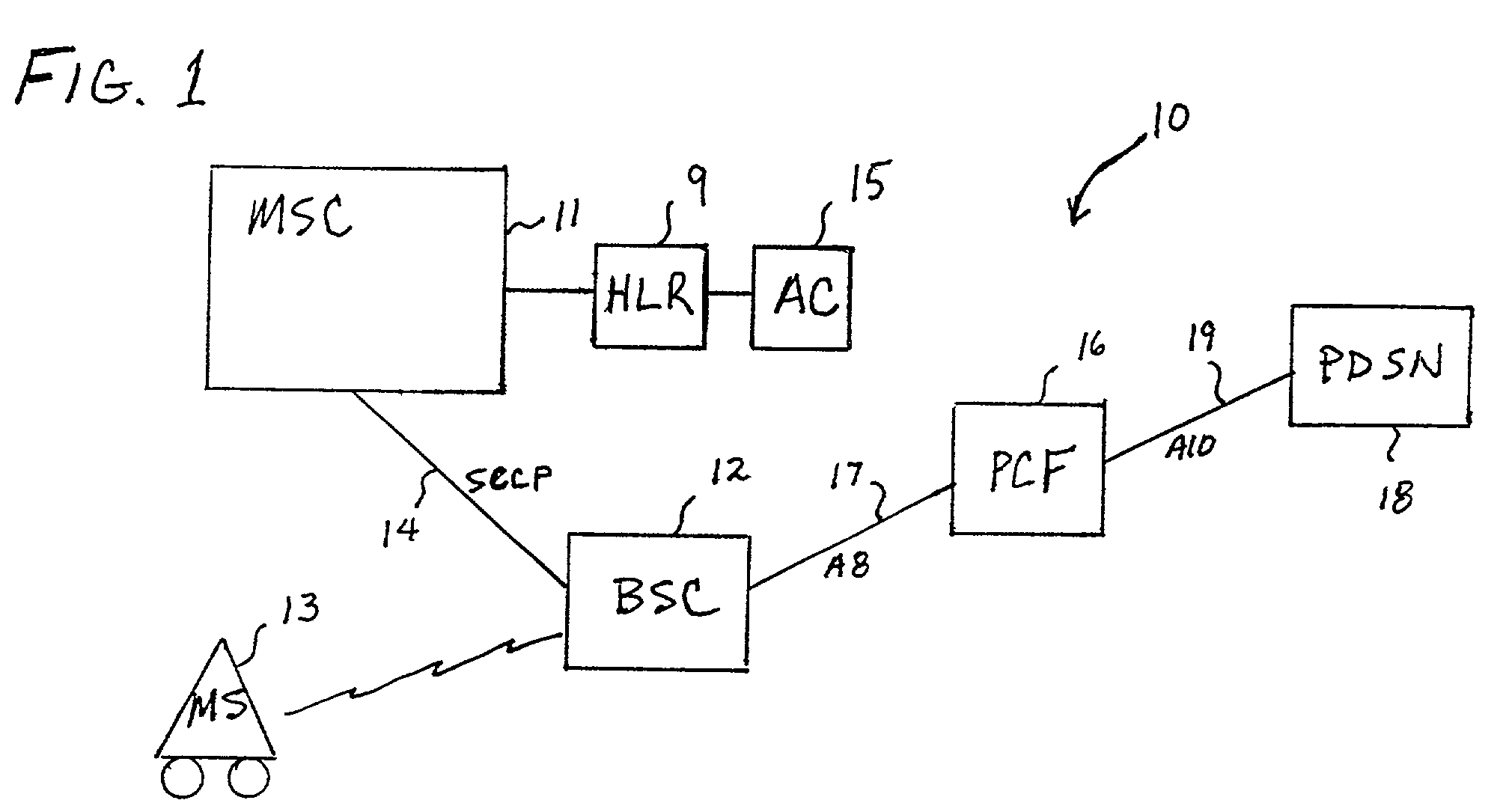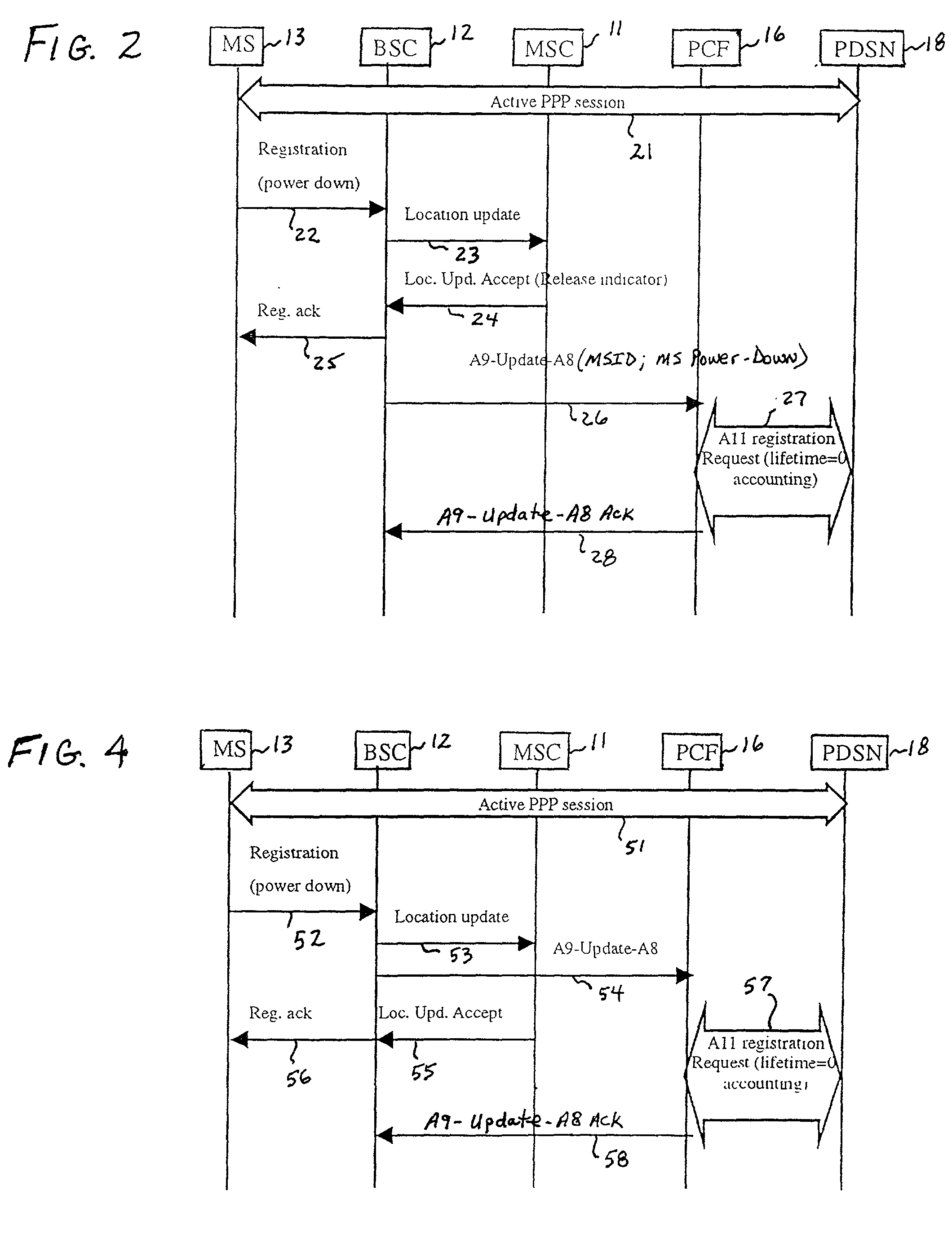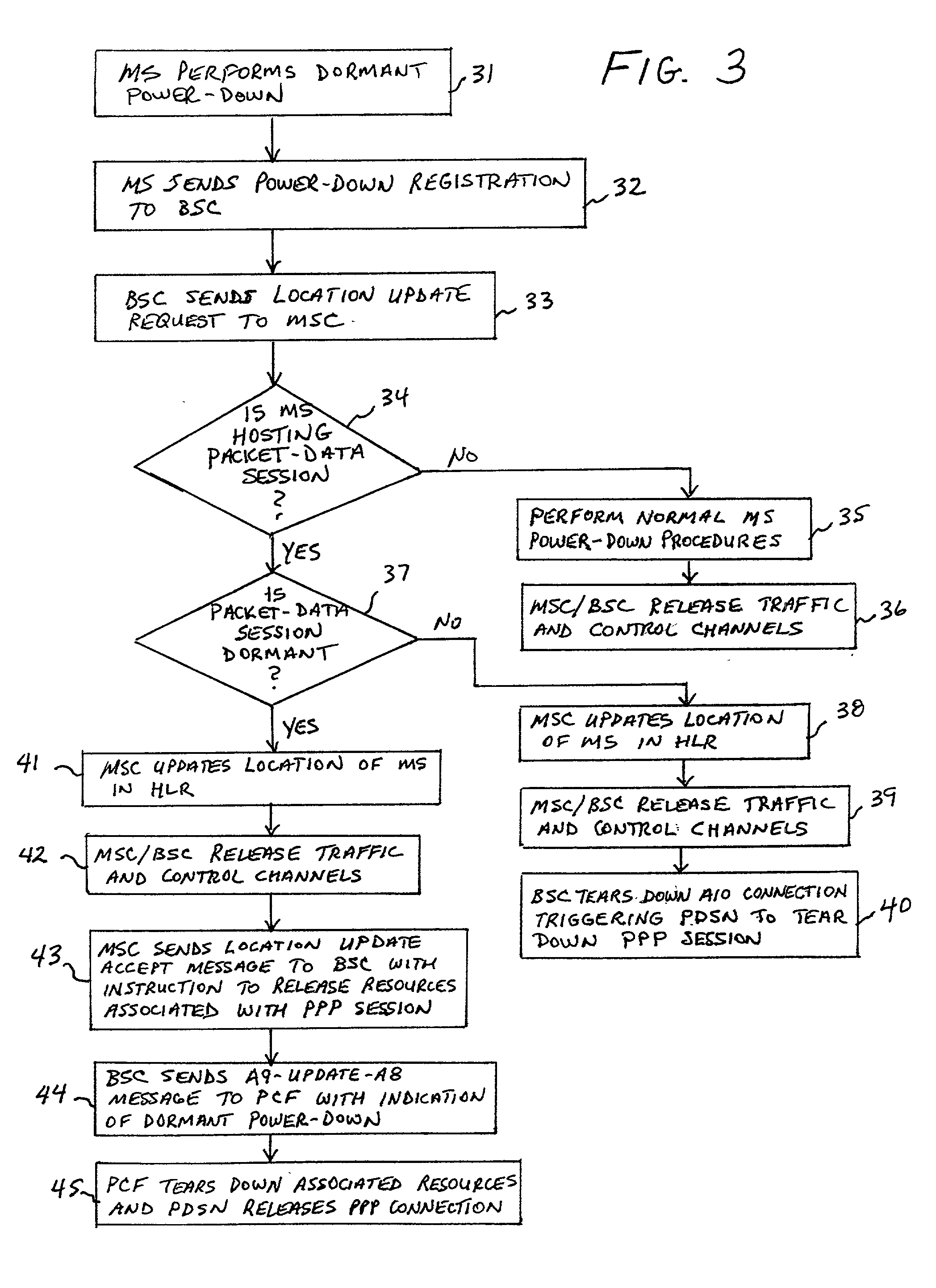Optimized packet-resource management
a packet resource and resource management technology, applied in the field of telecommunication systems, can solve the problems of consuming critical pdsn memory capacity, serious network inefficiencies, and high cost of ppp connection
- Summary
- Abstract
- Description
- Claims
- Application Information
AI Technical Summary
Benefits of technology
Problems solved by technology
Method used
Image
Examples
first embodiment
[0036] FIG. 2 is a signaling diagram illustrating the flow of messages between nodes in the wireless access network of FIG. 1 when the MS powers down during a dormant packet-data session in the method of the present invention. In this embodiment, the release is initiated by the MSC 11. At step 21, an active PPP session exists between the MS 13 and the PDSN 18. The session is dormant (i.e., no data is currently being transferred over the PPP session). At step 22, the dormant MS powers down and sends a power-down registration to the BSC 12. The BSC may not be aware that the packet-data session is dormant, and there is no A8 connection established with the PCF. The BSC triggers a Location Update Request 23 towards the MSC indicating that the MS has powered down. The MSC, which has previously received a Clear Request from the BSC (or an Assignment Failure indicating "packet call going dormant"), responds by sending a Location Update Accept message 24 to the BSC. The Location Update Acce...
second embodiment
[0041] FIG. 4 is a signaling diagram illustrating the flow of messages between nodes in the wireless access network of FIG. 1 when the MS 13 powers down during a dormant packet-data session in the method of the present invention. In this embodiment, the release is initiated by the BSC 12. At step 51, an active PPP session exists between the MS 13 and the PDSN 18. The session goes dormant (i.e., no data is currently being transferred over the PPP session), and the BSC releases the radio resources. At step 52, the dormant MS powers down and sends a power-down registration to the BSC. The BSC may know that the packet-data session is dormant, or it may merely inform the control entities (the PCF and the MSC) that the MS has powered down. As shown in FIG. 4, the BSC simultaneously triggers a Location Update Request 53 towards the MSC indicating that the MS has powered down, and triggers an A9-Update -A8 message 54 to the PCF also indicating that the MS has powered down. The MSC responds ...
third embodiment
[0054] FIG. 6 is a signaling diagram illustrating the flow of messages between nodes in a wireless access network when there is an authentication failure following the establishment of a packet-data session in the method of the present invention. In particular, FIG. 6 illustrates the situation in which an inter-BSC / inter-PCF / intra-PDSN dormant handoff is performed from a Source BSC 76 to a Target BSC 77, and from a Source PCF 78 to a Target PCF 79. The MS 13 is served by the same PDSN 18, and the authentication failure occurs in the MSC 11 following an Assignment Failure. It is assumed that the PCF has only one Packet Zone ID. It is also assumed that the MS has performed a MIP registration and established a PPP connection with the PDSN, but is now dormant, as shown at 81.
[0055] The dormant MS detects a change of Packet Zone ID while monitoring the broadcast channel and initiates an Origination message 82 with the DRS bit set to zero (0). The Target BSC will not establish a traffic c...
PUM
 Login to View More
Login to View More Abstract
Description
Claims
Application Information
 Login to View More
Login to View More - R&D
- Intellectual Property
- Life Sciences
- Materials
- Tech Scout
- Unparalleled Data Quality
- Higher Quality Content
- 60% Fewer Hallucinations
Browse by: Latest US Patents, China's latest patents, Technical Efficacy Thesaurus, Application Domain, Technology Topic, Popular Technical Reports.
© 2025 PatSnap. All rights reserved.Legal|Privacy policy|Modern Slavery Act Transparency Statement|Sitemap|About US| Contact US: help@patsnap.com



